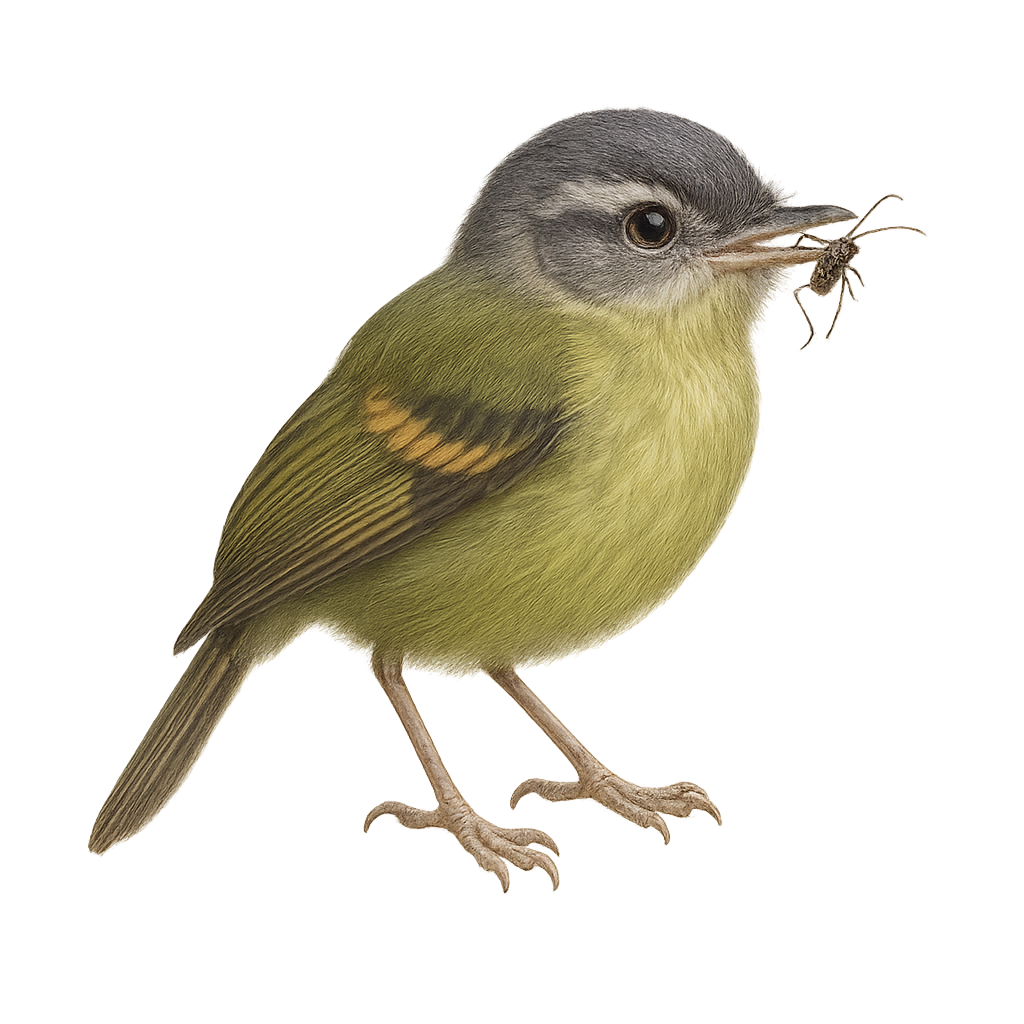Your wildlife photography guide.
Explore the restinga tyrannulet in detail, study its behavior, prepare your shots.
Where to observe and photograph the restinga tyrannulet in the wild
Learn where and when to spot the restinga tyrannulet in the wild, how to identify the species based on distinctive features, and what natural environments it inhabits. The WildlifePhotographer app offers tailored photography tips that reflect the restinga tyrannulet’s behavior, helping you capture better wildlife images. Explore the full species profile for key information including description, habitat, active periods, and approach techniques.
Restinga Tyrannulet
Scientific name: Pogonotriccus poecilotis

IUCN Status: Least Concern
Family: TYRANNIDAE
Group: Birds
Sensitivity to human approach: Not very shy
Minimum approach distance: 10 m
Courtship display: March to April
Incubation: 16-17 jours
Hatchings: March to May
Habitat:
humid forests, subtropical forests, tropical forests
Activity period :
Primarily active during the day, with peak activity in the morning and late afternoon.
Identification and description:
The Restinga Tyrannulet, or Pogonotriccus poecilotis, is a small passerine bird belonging to the Tyrannidae family. It is primarily found in the subtropical and tropical moist forests of southeastern Brazil. This bird is characterized by its striped black and white head, olive-green back, and pale yellow belly. It is often seen foraging for insects in dense foliage, moving with agility and speed. Although discreet, its melodious and repetitive song can be heard throughout the canopy. The Restinga Tyrannulet is not very shy, making it easier for birdwatchers to observe.
Recommended lens:
400 mm – adjust based on distance, desired framing (portrait or habitat), and approach conditions.
Photography tips:
To photograph the Restinga Tyrannulet, it is advisable to use a 400mm or longer telephoto lens to capture detailed images without disturbing the bird. Look for it in humid forests where it actively feeds. Be patient and wait for it to perch on an open branch for a good angle. The natural light of the morning or afternoon is ideal to highlight the colors of its plumage. Make sure to remain silent and limit your movements to avoid scaring it away.
The WildlifePhotographer App is coming soon!
Be the first to explore the best nature spots, track rutting seasons, log your observations, and observe more wildlife.
Already 1 433 wildlife lovers subscribed worldwide

